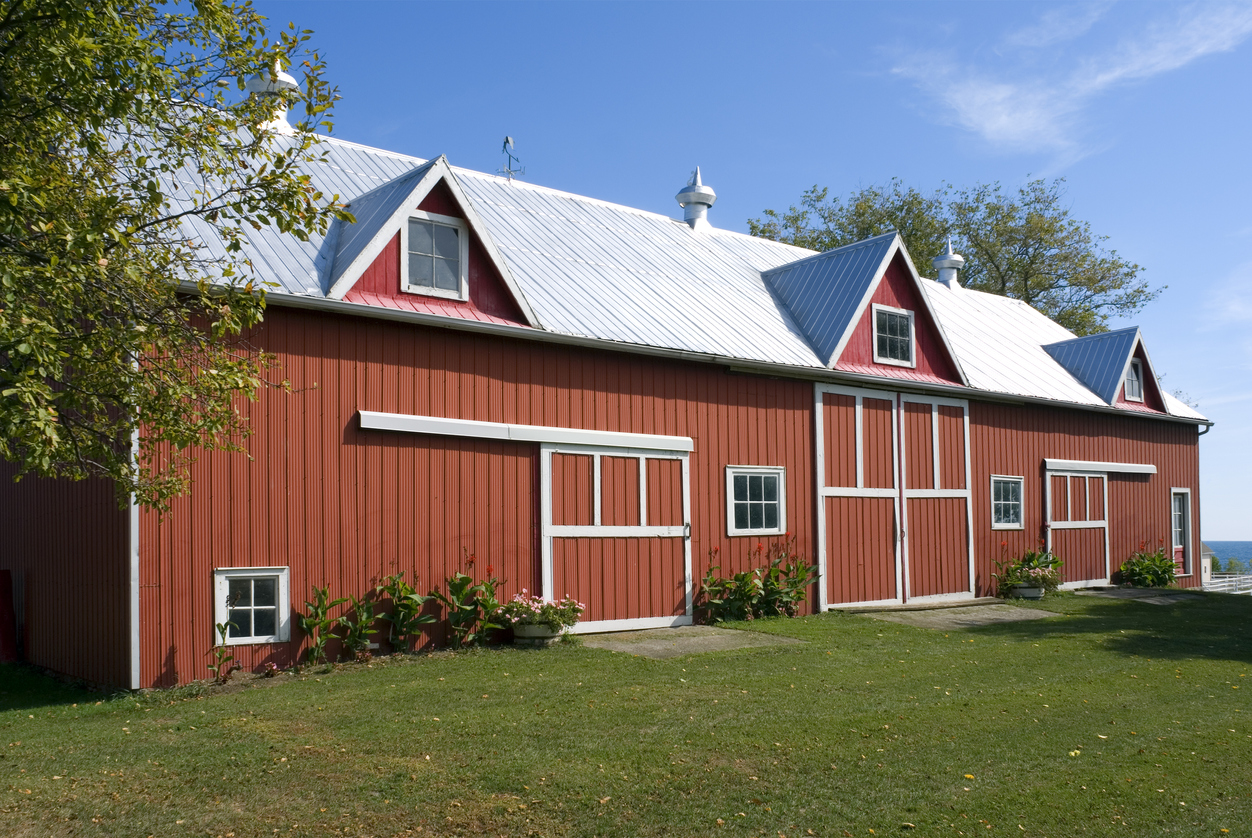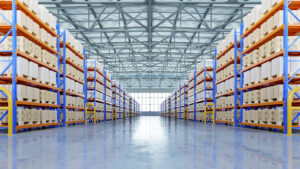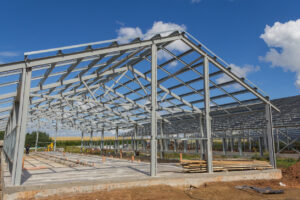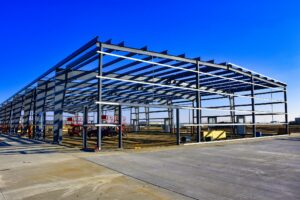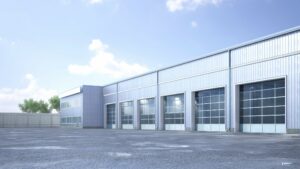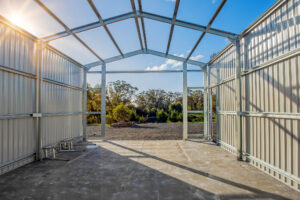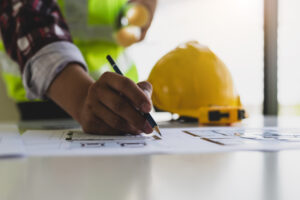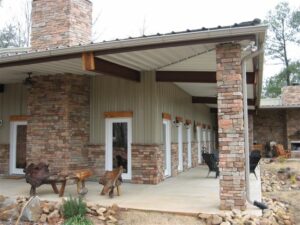In today’s construction industry, innovation is key when it comes to roofing solutions for metal buildings. Whether it’s a warehouse, factory, or retail space, the roofing types of a metal building plays a vital role in protecting the structure and its contents from the elements.
The U.S. roofing market reached a value of $21.9 billion in 2022. In the coming years, the industry is expected to grow between 5% and 7% per year.
With advancements in technology and a greater focus on sustainability, there is now a wide range of innovative roofing options available that offer both durability and efficiency.
In this article, we will explore the basics of metal building roofing, different types of roofing solutions, the role of technology in roofing, cost analysis, and how to choose the right roofing solution for your metal building.
Table of Contents:
- Understanding the Basics of Metal Building Roofing
- Exploring Innovative Roofing Solutions
- The Role of Technology in Roofing Solutions
- Cost Analysis of Innovative Roofing Solutions
- Choosing the Right Roofing Solution for Your Metal Building
- Conclusion
- Frequently Asked Questions
Understanding the Basics of Metal Building Roofing
Before diving into the world of innovative roofing solutions, it’s important to understand the basics of metal building roofing. Metal roofs are known for their strength, durability, and resistance to extreme weather conditions.
However, they also have unique characteristics that require careful consideration during the design and installation process.
One important aspect to consider when it comes to metal building roofing is the material itself.

Metal roofs are typically made from steel, aluminum, or copper. Each material has its advantages and considerations. Steel is a popular choice due to its affordability and strength. On the other hand, aluminum is lightweight and resistant to corrosion, making it a great option for coastal areas.
Copper, although more expensive, offers a distinctive look and exceptional durability.
Did You Know?
The metal roofing market is expected to experience strong growth from 2024 to 2032. This growth will be driven by the increasing construction of commercial buildings in developing economies. Additionally, the Paris Agreement has set a target of reducing energy intensity in buildings by about 30% per square meter by 2030.
The Importance of Quality Roofing for Metal Buildings
Quality roofing is crucial for metal buildings as it ensures the longevity and structural integrity of the entire building. A well-designed roof should provide adequate protection against rain, wind, snow, and other natural elements. It should also be able to withstand the weight of heavy snow loads and prevent leaks or water damage.
When it comes to quality roofing, proper installation is key. Metal roofs require precise installation techniques to ensure a watertight seal and prevent any potential issues down the line. This includes using the correct fasteners, ensuring proper ventilation, and paying attention to flashing details.
Different Types of Metal Building Roofing
When it comes to metal building roofing, there are several types to choose from, each with its advantages and disadvantages. One of the most popular choices is standing seam metal roofing, which features vertical metal panels with raised seams that interlock.
This type of roofing for metal building offers excellent waterproofing and can be easily installed and maintained.
Another option is metal shingle roofing, which mimics the appearance of traditional asphalt shingles but provides the added benefits of metal, such as durability and longevity.
Metal shingle roofs are available in a variety of styles and colors, allowing for greater design flexibility.
For those looking for a more eco-friendly roofing solution, there are also metal roofs made from recycled materials. These roofs not only reduce waste but also offer energy-saving benefits, such as increased insulation and reduced heat transfer.
It’s important to consider the specific needs and requirements of your metal building when choosing the right roofing option. Factors such as climate, budget, and aesthetic preferences should all be taken into account to ensure the best possible outcome.
Pro tip:
Each year in the U.S., approximately 5 million new roofs are installed. Metal shingles make up a significant portion of this number due to their increasing popularity. Despite the higher initial cost compared to other materials, metal shingle roofs are well-known for their durability and can prove to be a cost-effective option in the long run.
Exploring Innovative Roofing Solutions
Now that we’ve covered the basics, let’s delve deeper into the world of roofing and explore some of the most innovative solutions available for metal buildings.
Energy-Efficient Roofing Solutions
In an era of growing environmental consciousness, energy-efficient roofing solutions are in high demand. These solutions not only help reduce greenhouse gas emissions but also offer significant cost savings in terms of heating and cooling.
One such solution is the installation of solar panels on the roof, which can generate renewable energy and offset electricity costs.
But did you know that there are other energy-efficient roofing options as well? For instance, cool roof coatings can be applied to metal roofs to reflect sunlight and reduce heat absorption.
This can lead to a cooler building interior and lower energy consumption for air conditioning. By harnessing the power of innovative materials and technologies, these roofing solutions are paving the way for a more sustainable future.
Check out: Cooling Solutions For Metal Buildings
Durable and Long-Lasting Roofing Options
When it comes to roofing, durability is key. Innovative roofing solutions now offer enhanced durability and longevity through the use of advanced materials and technologies.
For example, metal roofs with high-performance coatings can resist corrosion, fading, and chalking, ensuring that the roof maintains its pristine appearance over time.
But what if we told you that there are even more ways to ensure the longevity of your roof? Imagine a roofing system that can heal itself. Yes, you heard that right! Some cutting-edge roofing systems incorporate multilayer membranes and self-healing properties.
These systems can automatically repair small punctures or tears, extending the lifespan of the roof and minimizing the need for maintenance. With these innovative solutions, you can have a roof that not only withstands the test of time but also saves you time and money in the long run.
Did You Know?
Some self-healing roofing membranes utilize water-reactive polymer technology. When water infiltrates the membrane through cracks or punctures, the hydrophilic polymer molecules attract and bind with the water molecules, activating the self-healing mechanism.
Eco-Friendly Roofing Solutions
In recent years, there has been a growing emphasis on sustainability in the construction industry. Innovative roofing solutions now focus on reducing environmental impact through the use of recycled materials and energy-efficient designs.
For example, green roofs, which are covered in vegetation, can provide insulation, absorb rainwater, and improve air quality.
Green roofs not only provide insulation, reduce heat absorption, and promote biodiversity, but they also improve air quality in urban environments.
But the eco-friendliness doesn’t stop there. Imagine a roofing solution that not only reduces energy consumption but also conserves water. Rainwater harvesting systems can be installed on metal roofs to capture and reuse rainwater for nonpotable purposes, such as irrigation or toilet flushing.
These systems not only help reduce the strain on water resources but also contribute to LEED certification and other green building initiatives.
With these eco-friendly roofing solutions, you can make a positive impact on the environment while enjoying the benefits of a functional and sustainable roof.
The Role of Technology in Roofing Solutions
Technology has played a significant role in advancing roofing solutions for metal buildings. From the development of new materials to the use of sophisticated design software, technology has revolutionized the way roofs are designed, manufactured, and installed.
One key area where technology has made a substantial impact is in the realm of sustainability.
The integration of solar panels into roofing systems has become increasingly popular, allowing buildings to generate their renewable energy and reduce their carbon footprint.
This innovative approach not only benefits the environment but also offers long-term cost savings for building owners.
Advancements in Roofing Material Technology
With the advent of new materials, metal roofs have become more versatile and offer increased performance benefits. For example, the use of advanced coatings can enhance the durability and weather resistance of metal roofs, making them suitable for even the most challenging environments.
Furthermore, the development of self-healing materials has revolutionized maintenance practices for metal roofs. These materials can repair minor damages on their own, extending the lifespan of the roof and reducing the need for frequent repairs.
Moreover, advancements in insulation materials have improved energy efficiency, allowing metal roofs to better regulate temperature fluctuations in the building.
The Impact of Design Software on Roofing Solutions
Design software has drastically changed the way roofs are conceptualized and engineered. With the help of 3D modeling and virtual simulations, architects and engineers can accurately assess the performance of different roofing solutions before construction begins. Design software also enables more precise and efficient material estimation, reducing waste and improving cost-effectiveness.
Additionally, it allows for easier collaboration among project stakeholders, ensuring that everyone is on the same page throughout the design and construction process.
As technology continues to advance, the future of roofing solutions for metal buildings looks promising. Innovations such as drone technology for roof inspections and the use of robotics for installation are on the horizon, promising further improvements in the efficiency, safety, and overall performance of metal roofing systems.
Cost Analysis of Innovative Roofing Solutions
While innovative roofing solutions offer a wide range of benefits, it’s important to consider the associated costs. A comprehensive cost analysis should include both the initial installation costs and the long-term maintenance costs.
When evaluating the initial installation costs of innovative roofing solutions, it’s crucial to take into account not only the direct expenses but also any potential savings or incentives.
Some environmentally friendly roofing options, such as green roofs or cool roofs, may qualify for tax credits or rebates, which can significantly offset the upfront investment.
Initial Installation Costs
The initial installation costs of innovative roofing solutions on metal buildings can vary depending on factors such as the type of roofing system, the size of the building, and the complexity of the design. For example, solar panel installations may have higher upfront costs, but they can provide significant long-term savings on energy bills in metal building roofing.
It’s important to carefully evaluate the budget and long-term goals of the project to determine the most suitable roofing solution that provides the best value for money.
Moreover, consulting with experienced roofing contractors or sustainable building experts can help in identifying cost-effective solutions that align with the project’s budget and sustainability objectives.
Long-Term Maintenance Costs
In addition to the initial installation costs of metal building roofs, it’s essential to consider the long-term maintenance costs associated with innovative roofing solutions. While some solutions may require minimal maintenance, others may require regular inspections and repairs.
Factors such as the climate, roof accessibility, and the warranty provided by the manufacturer should be taken into account when assessing the overall maintenance costs.
Furthermore, investing in preventive maintenance measures, such as routine inspections and proactive repairs, can prolong the lifespan of the roofing system and minimize unexpected expenses in the future.
Choosing the Right Roofing Solution for Your Metal Building
With so many innovative roofing solutions available for metal buildings, choosing the right one can be a challenging task. There are several factors to consider to ensure that the selected roofing solution meets the specific needs of the project.
Factors to Consider When Selecting a Roof
Firstly, the climate and weather conditions of the building’s location should be taken into account. Certain roofing solutions may be better suited for areas with high precipitation or extreme temperature fluctuations.
Secondly, the intended use of the building should also be considered. Buildings that require a high level of insulation or have specific ventilation requirements may benefit from certain roofing solutions, such as green roofs or ventilated roofing systems.
How to Evaluate Different Roofing Solutions
When evaluating different roofing solutions, it’s important to carefully analyze factors such as cost, performance, durability, sustainability, and the expertise of the roofing contractor.
Consulting with industry professionals and conducting thorough research can help in making an informed decision.
It’s also advisable to review case studies and testimonials from other projects that have used the roofing solution under consideration. This can provide valuable insights into the real-world performance and satisfaction of the solution.
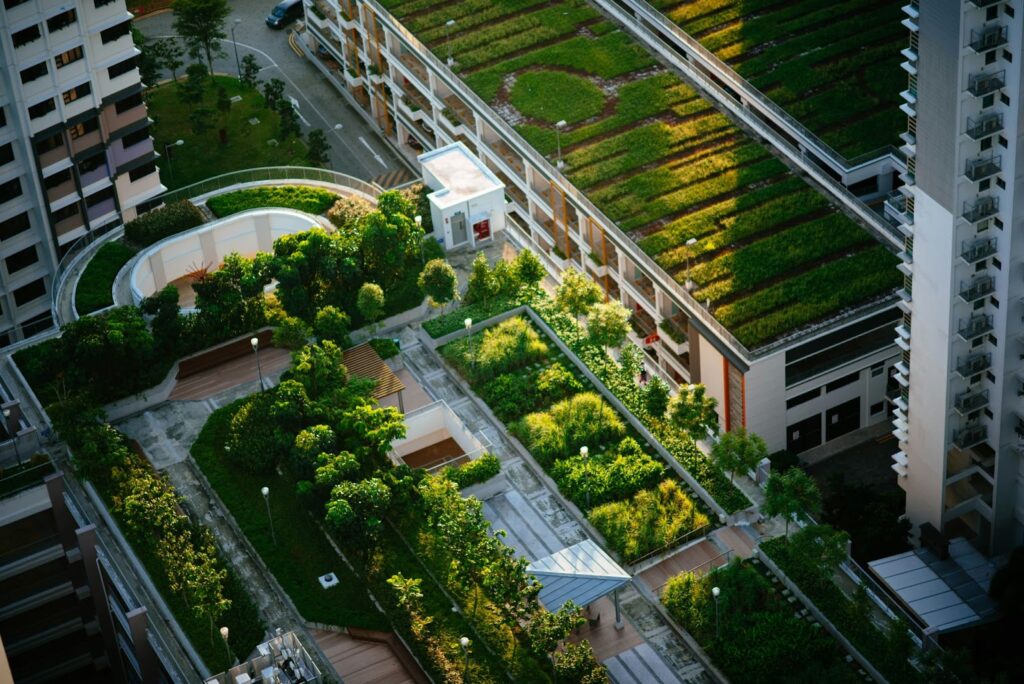
Conclusion
Innovative roofing solutions for metal buildings offer a wide range of benefits, from enhanced durability and energy efficiency to sustainability and design flexibility.
By understanding the basics of metal building roofing, exploring different types of solutions, and considering factors such as cost and performance, you can choose the right roofing solution that meets your specific needs and budget.
Embracing technology and keeping up with advancements in roofing materials and design software will ensure that your metal building is equipped with a roof that provides long-lasting protection and value.
SteelCo has over 23 years of experience in dropshipping customizable building materials for pre-engineered metal buildings and steel roofing needs nationwide. We’re also a locally award commercial GC in Georgia, managing projects 200,000+ square feet in various sectors including industrial, retail/mixed-use, manufacturing and distribution, self-storage, and commercial. Our general contracting expertise allows us to take projects from concept to reality with customizations to reflect your industry-specific needs and preferences. Learn more about our services.
———————–
Frequently Asked Questions
What is the best roof for a metal building?
The best roof for a metal building depends on several factors, including the intended use of the building, cost, local weather conditions, and personal style preferences. A popular choice for metal buildings is PBR (Purlin Bearing Rib) panels. They are designed with exposed fastenings and ribs that run vertically down the panel and are typically made from steel.
What is the most durable metal roof?
The most durable metal roofs are typically made from strong materials such as steel, aluminum, zinc, copper, and tin. They can withstand extreme weather conditions, including heavy snow, intense summer heat, and high winds of up to 140 mph.
How much does a metal roof cost?
The cost of a metal roof could vary depending on customizations and materials. Generally, the cost range for a metal roof is between $15,000 and $24,500, with an average cost of around $18,600. Installation costs can range from $4 to $40 per square foot, or $400 to $4,000 per square. The total installation cost for a metal roof can be anywhere from $6,800 to $34,000, depending on the type of metal and the size of the roof.









